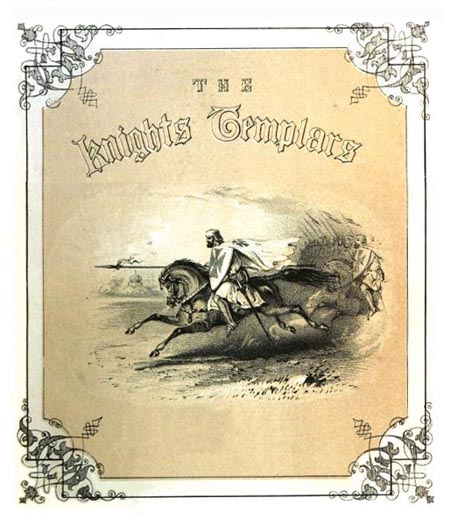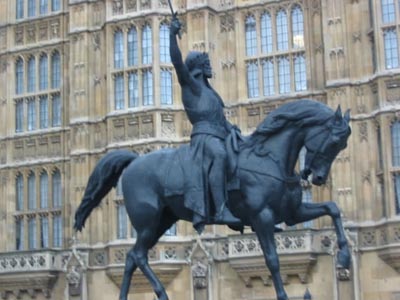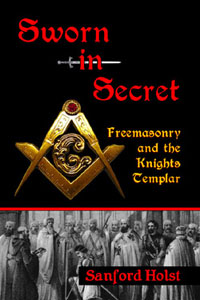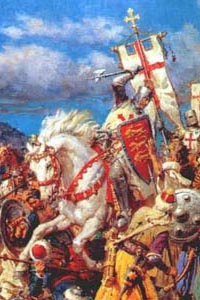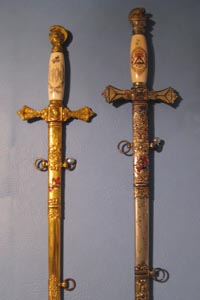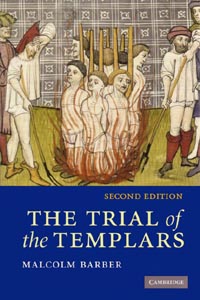|
knights templar history |
||
|
|
||
|
|
Knights Templar History
Knights Templar History
Medieval Knights Templar History In 1119 the Poor Fellow-soldiers of Christ and the Temple of Solomon, known by the more popular name of the Knights Templar, were formed in Jerusalem, shortly after the First Crusade ended with the capture of that city. Sources from those times gave this initial date as 1118 or 1119 or 1120 due to use of different calendars and records, with the middle date now being generally accepted.The celebrated purpose of the Knights Templar was to protect the Christian pilgrims now streaming into the Holy Land, because the Islamic Saracens who had held the land in prior years were still roaming the countryside and preying on the pilgrims. The lofty mountains bordering the sea-coast were infested by bold and warlike bands of fugitive Mussulmen, who maintained themselves in various impregnable castles and strongholds, from whence they issued forth upon the high-roads, cut off the communication between Jerusalem and the sea-ports, and revenged themselves for the loss of their habitations and property by the indiscriminate pillage of all travellers. --Charles G. Addison In 1129 first Grand Master Hugh de Payens attended the Council of Troyes that was convened by Pope Honorius II in France. There the the officers of the Church formally approved the formation of the Templar Order. Saint Bernard of Clairvaux wrote the famed Rule or "Regula" that governed the actions of the Templars, though it would often be amended in later years. Section XX ....To all the professed knights, both in winter and summer, we give, if they can be procured, white garments, that those who have cast behind them a dark life may know that they are to commend themselves to their Creator by a pure and white life. --The Regula In 1187 the city of Jerusalem fell to Saladin, who took back Temple Mount, the place of Solomon's Temple. Three years later a new Crusade was launched, bringing Richard the Lionheart of England and Philip II of France to the Holy Land. Richard joined with the Knights Templar and won many battles, but could not retake Jerusalem. During the famous march of Richard Coeur de Lion from Acre to Ascalon, the Templars generally led the van of the christian army, and the Hospitallers brought up the rear. Saladin, at the head of an immense force, exerted all his energies to oppose their progress, and the march to Jaffa formed a perpetual battle of eleven days. --Charles G. Addison
King Richard In 1291 the last of the Crusaders were driven from the Holy Land. Many great battles were fought, but city after city fell to the Mamluk armies. The last Templar castles, Tortosa to the north, and the great sea fortress of 'Atlit to the south, were now isolated, and they too were evacuated on 3 and 14 August. Frm then on the most forward Templar base was the island of Cyprus. --Malcolm Barber In 1307 on Friday the 13th of October the Knights Templar were attacked all across France by King Philip IV, and under pressure from Pope Clement V most of the other kings of Europe followed suit. Under severe torture a number of Templars "confessed" to acts of heresy, then swore they had acted under duress and had done nothing wrong -- whereupon they were burned at the stake. Large numbers of Templars were never arrested and simply disappeared at this time, along with great amounts of treasure they were said to possess. The objectives of the dawn raid were clear from Philip's sealed orders: The directions sent by the king to his officers had been to seize the persons and the goods of the Templars; to interrogate, torture, and obtain confessions from them; to promise pardon to those who confessed; and to menace those who denied. --Keightley and Lomas [This outline of Knights Templar history is expanded in individual articles on this site] Modern Knights Templar History In 1737 the lingering mystique of the Knights Templar received a major influx of attention when Chevalier Ramsay produced his famous Oration. He proposed that Freemasonry had evolved from the knights of the Crusades, and then clarified that these men were the Knights Templar. The conferral of Knights Templar degrees quickly gained popularity within Freemasonry. At the time of the Crusades in Palestine . . . they agreed upon several ancient signs and symbolic words drawn from the well of religion in order to recognize themselves amongst the heathen and Saracens. These signs and words were only communicated to those who promised solemnly, and even sometimes at the foot of the altar, never to reveal them. --Chevalier Ramsay In 1779 the conferral of Knights Templar degrees took on a more formal role in Freemasonry when the Grand Master of Lodge Mother Kilwinning gave a charter for a new lodge in Dublin called the "High Knight Templars of Ireland Lodge." This then became the Early Grand Encampment of Ireland, and their practices soon spread to Scotland, England and the rest of the world. The ritual that the Early Grand Encampment of Ireland worked (acted out) became known as the E.G. Rite (for "Early Grand Rite") and was adopted in Scotland by a group called the Early Grand Mother Encampment of Scotland. --Robert Lomas Today the Knights Templar degrees are the highest level of the York Rite within Freemasonry. The earlier levels are Royal Arch Masonry and The Cryptic Rite. Although there can be variations in degree titles in different countries, the highest degree is usually known as the Order of the Temple. The last order is the one that dubs the Mason a Knight Templar, and most Masons who have been through it will describe the ceremony as one of the most memorable, thought-provoking, and impressive they have ever witnessed. It is truly unique among the degrees of Freemasonry. --Christopher Hodapp
When hundreds of Templars were executed after 1307, it changed everything that followed. The knights who survived those attacks had to choose between becoming Hospitallers or living outside the law. And in time they saw the fall of the men who had attacked them. Sworn in Secret tells the real-life stories of extraordinary people who lived through those events and gives us a richer sense of what life was like in this knightly society. Knights Templar History Sworn in Secret Knights Templar history ________________________________________________________ Home Rare Masonic books, Civil War, Best Masonic books, Masonic directory, Masons Templars, Masonic research Masonic authors, Civil War2, Templar medals, Table Lodge Buffalo Bill Cody, Quarry Project, Old Time Freemasonry Sworn in Secret, Early American, Knights Templar, Civil War3 Latest books, Born in Blood, Solomon's Temple, Coil's Encyclopedia York Rite, Allen Roberts, John Robinson, 2010 symposium, Allen Price Grand Lodge England, Holy Grail, Kabbalah, Nadia, Robert Burns Masonic education, UCLA, Stonemasons, Scottish Lodge US Lodges, UK Lodges, Canada Lodges, Australia Lodges Templar Swords, Freemason, Templar Trials, Templars Vatican Origin of Freemasonry, Templar history, Freemasons history © 2008-2025 Sanford Holst - web design by webwizards |
Knights Templar history
In this section you will experience revealing details of the Knights Templar that go beyond what is commonly shown about them. What events and people brought them to such great heights that they became legendary? What symbols, swords and citadels helped shape their lives? What were their traditions and how are they used today? You will discover all these things here and in the referenced books. If you can shed additional light, your comments are welcome. Featured Articles
King Richard I of England set out on the Third Crusade in 1190. Upon his arrival in the Holy Land a year later, he joined with the Knights Templar in a series of campaigns. These were recorded in great detail by a literate member of the Crusades.
A Knights Templar sword from Birmingham, England found its way into Steve King's possession on a trip to Vienna, Austria. Often times the maker of a particular sword can be difficult to determine with any certainty, but in this case that information was etched in small letters directly on the sword....
Surprisingly enough, even though the trials of the Knights Templar took place during the 1300s, there were copious volumes of written material from those days, and they provided great grist for author Malcolm Barber's mill....
Knights Templar history |







